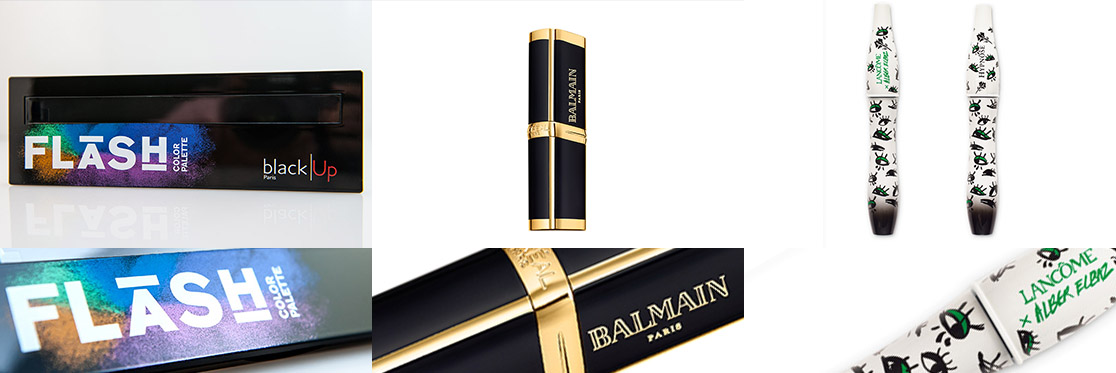
Pad Printing on Glass Plastic and Metal
Do you think pad printing is the printing technique most suitable for your packaging?
Find out in just 2 minutes: read the answers to the Frequently Asked Questions we receive every day about pad printing!
WHAT IS PAD PRINTING?
Pad printing is a printing technique that consists of transferring the colour using a pad impregnated with ink that comes into contact with the workpiece itself. It can be considered the “sister” of screen printing as it is able to print where UV screen printing cannot, offering an extremely high-quality print level.
INDECO Serigrafia is able to print on objects of different shapes and sizes. To achieve high standards of printing using the pad printing technique, we always recommend letting our graphics department take a look at the printing decoration, in order to resolve any issues.
WHAT ARE THE STRENGTHS OF PAD PRINTING?
Pad printing does not use UV colours and this is a strength where the surfaces to be printed on have particular characteristics. We are referring to cases in which the glass to be printed on has been previously treated with release agents: in such situations, pad printing is able to guarantee extremely high adherence.
Our company has machinery that can work on workpieces in 1, 2, 3, 4, 5 and 6 colours more easily, resulting in positive effects on productivity, which will be higher for all types of material, including plastic, glass and wood. Pad printing is the best printing technique in the presence of decorations that involve several colours.
Last but not least, pad printing is most suitable in cases in which customers want to use multiple colours on the same design, using our machinery with up to 6 printing colours.
WHAT ARE THE LIMITATIONS OF PAD PRINTING?
The main limitation of pad printing is that, as UV colours are not available, the workpieces do not come out of the machine ready to use, but need to go into ovens to dry. This process is typically slower than UV screen printing. For this reason, the overall productivity in large orders is on average lower.
IN WHAT INDUSTRIES IS PAD PRINTING USED?
Thanks to the characteristics described above, pad printing is widely used in the cosmetics, perfumery and beverage industries. Click here to visit all our interesting casestudies.
WHAT ARE THE MOST DIFFICULT WORKPIECES TO USE THE PAD PRINTING TECHNIQUE ON?
The most difficult workpieces to print using the pad printing technique are those with different and complex angles. But thanks to the experience gained over the years, we can always find the most suitable solutions.
As with the other printing techniques, when it comes to pad printing it is always better to let our graphics department take a look at customer artwork. This will make it possible to prevent any problems during the printing process.
WHEN AND WHY DO WE ADVISE CUSTOMERS ASKING FOR PAD PRINTING TO USE OTHER PRINTING TECHNIQUES?
Alternatively, we can recommend UV screen printing, as the technique is largely the same but involves shorter processing times. A typical situation is one in which the customer wants to obtain a specific type of print on the workpiece, but has no idea of which is the most efficient technique to use.
Contact us for more information or go back to pad printing!
_
¯
PAD PRINTING MACHINES
- 1 Aut. Machine 6 colors
- 4 Aut. Machines 5 colors
- 2 Aut. Machines 2 colors
- 3 SemiAut. Machines 4 colors
Product Capacity:
100.000 pz. total/die
We can help you if you have any question or need a quote or design requirement.





